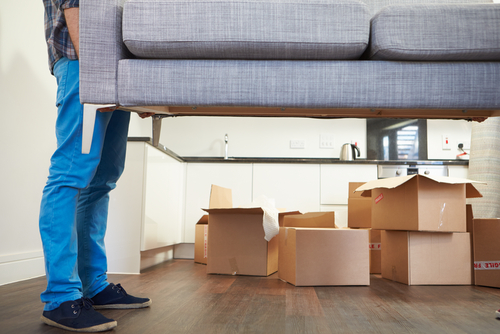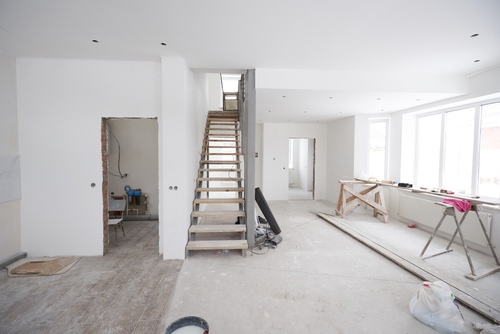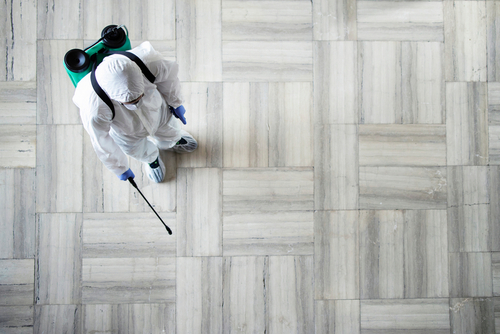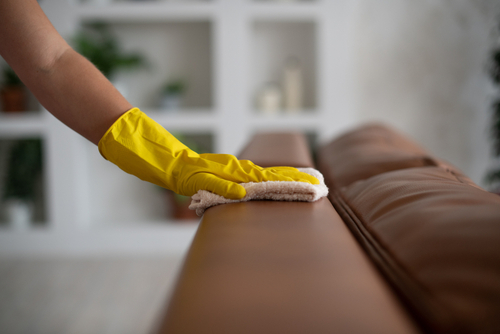
Condominiums and Residential Disinfection Service in Singapore
October 3, 2023
Disinfection Services for Moving In/Out: Healthy Transition to Your Home
October 31, 2023Why Disinfect After Renovations or Construction: Healthy Living Space

Why Disinfect After Renovations or Construction Healthy Living Space
Why Disinfect After Renovations or Construction: Healthy Living Space. Embarking on a renovation or construction project is always an exhilarating experience, filled with the promise of transformation and new beginnings.
However, what most people often overlook is the critical step that should follow any such project: comprehensive disinfection.
This article serves as a definitive guide on why post-construction disinfection is not just beneficial but essential.
The Hazards in Post-Construction Environments
Rampant Microbial Growth
Construction or renovation projects often utilize various materials, which can become fertile breeding grounds for various forms of bacteria and molds.
Left unattended, these microbial forms can multiply and pose serious health risks, including respiratory issues and allergic reactions.
Proliferation of Dust and Allergens
The construction process inevitably results in the generation of significant amounts of dust and particulates.
These particles can become airborne, settling on various surfaces and even entering the home’s ventilation system.
The result is a heightened risk of allergic reactions and respiratory complications, especially for individuals with pre-existing conditions like asthma.
Residual Chemicals
The chemicals found in paints, solvents, and adhesives can leave behind residues that may not be immediately visible but can become a health hazard over time.
Such residues can emit fumes that, when inhaled, can lead to headaches, dizziness, and, in extreme cases, more serious health conditions.
The Benefits of Post-Construction Disinfection

Tangible Health Gains
Effective post-construction disinfection can substantially reduce dust and allergens, thus minimizing potential respiratory issues.
A rigorous disinfection process will neutralize harmful bacteria, viruses, and other pathogens, making your newly renovated space a safer environment.
Extended Property Life
Regular disinfection safeguards your new installations, finishes, and fittings from premature degradation, thereby extending their lifespan.
Unchecked microbial growth can accelerate material decay, causing an array of problems ranging from unpleasant odors to structural weaknesses.
Timing Your Disinfection: When is the Right Time?
Immediate Versus Delayed: The Pros and Cons
Immediate disinfection offers the advantage of reducing health risks without delay. However, it might interrupt other post-construction activities.
Delayed disinfection allows for better planning but risks potential exposure to harmful elements for an extended period.
Aligning with Construction Schedules
Incorporate the disinfection timeline into your construction schedule to ensure a seamless transition from construction to a safe and comfortable living space.
Identifying Key Zones for Disinfection
Essential Fixtures and Installations
Focus on newly installed fixtures and fittings, as these are most vulnerable to microbial contamination during the installation process.
The Importance of Walls and Floors
These large surface areas, especially in damp spaces like bathrooms, are often overlooked but can harbor mold and bacteria.
Air Ventilation Systems
A thorough cleaning and disinfection of the ventilation systems and ducts are crucial, as these can distribute airborne pathogens throughout the property.
Common Mistakes to Avoid During Post-Construction Disinfection

Overlooking Hidden Spots
One of the prevalent mistakes people make during the disinfection process is ignoring less obvious areas, like behind appliances or within crevices.
These spots can be breeding grounds for bacteria and molds, which can compromise the overall hygiene of your living space.
Using Inappropriate Disinfectants
Not all disinfectants are created equal. Utilizing a disinfectant that’s not suitable for the type of material you’re cleaning can not only be ineffective but can also damage your newly renovated or constructed space. Always read labels and do your research before applying any products.
Skimping on Time and Resources
Effective disinfection requires a meticulous approach. Cutting corners by rushing through the process or skimping on the amount of disinfectant used can result in subpar results. Always allocate sufficient time and resources to ensure thorough disinfection.
DIY or Professional Services: Making the Right Choice

Although DIY methods may be tempting for cost-saving, their effectiveness in ensuring comprehensive disinfection is often subpar.
Opting for professional services ensures that disinfection is executed to the highest standard, backed by expertise and the latest equipment.
Navigating the Selection of a Disinfection Service
Always verify the credentials and reviews of any professional service you consider to ensure quality and reliability.
Before committing to a service, inquire about the disinfectants used, the extent of the service, and any associated costs to avoid surprises.
Must-Have Products for Effective Disinfection
Whether you’re considering alcohol-based, chlorine-based, or plant-based disinfectants, each comes with its own set of advantages and limitations.
If opting for DIY, invest in high-quality masks, gloves, and eye protection to safeguard against accidental exposure to harmful chemicals.
Preserving a Sanitized Environment
Once your space is disinfected, maintaining it requires consistent cleaning efforts. Simple habits like regular sweeping and dusting can go a long way.
High-traffic and moisture-prone areas like kitchens and bathrooms require more frequent disinfection to keep microbial growth at bay.
Frequently Asked Questions (FAQs)
Can I move in immediately post-disinfection?
It’s advisable to wait at least 24-48 hours to ensure that all residues have dissipated.
How long does the process take?
A thorough disinfection can range from 2 to 6 hours, depending on the size and condition of the space.
Should I vacate during disinfection?
It’s highly recommended to vacate the premises during the disinfection process for safety reasons.
What precautions should be taken during the disinfection process?
Wearing appropriate protective gear, ensuring good ventilation, and following the disinfectant manufacturer’s instructions are vital precautions.
Is the disinfection process pet-safe?
Always check the labels of the disinfectants for pet safety information. Opt for pet-friendly products and ensure that the space is well-ventilated before allowing pets back in.
Can I disinfect electronic devices and equipment?
Most electronic devices are sensitive to moisture and should not be directly sprayed with liquid disinfectants. Wipe them down with disinfectant wipes designed for electronics or use specialized electronic sanitizing equipment.
Why Disinfect After Renovations or Construction: Healthy Living Space – Conclusion

To summarize, neglecting post-construction disinfection is a risky oversight that can have lasting implications for both your health and the integrity of your property.
By understanding the risks and taking proactive steps for disinfection, you not only ensure a healthier living space but also prolong the life and quality of your property.
Are you seeking professional and reliable disinfection services in Singapore? Contact us today!



